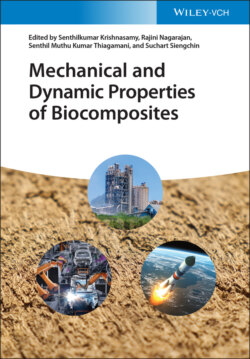Читать книгу Mechanical and Dynamic Properties of Biocomposites - Группа авторов - Страница 27
1.5.1 Tribological Behavior
ОглавлениеTribological behavior refers to friction‐related properties of the materials. The frictional coefficient of hybrid sisal/glass fiber (GF)‐reinforced epoxy composites was measured by Ashok Kumar et al. [44], using different sliding speeds of 0.2, 2.0, and 4.0 mm/s, under a constant load of 10 N. At an atmospheric temperature of 22 °C and relative humidity of 45%, both alkali‐treated samples of fiber composites and untreated ones were tested. The graph of frictional coefficient against fiber length (Figure 1.5) revealed that the frictional coefficient was lower, up to 2 cm fiber length. However, the frictional coefficient increased with an increasing composite fiber length. Moreover, fiber length addition led to a decrease in the frictional coefficient when sliding speeds were higher. The treated fiber of the reinforced composites yielded an optimum improvement at 2 cm in comparison with the untreated samples.
Figure 1.5 Frictional coefficients of (a) treated and (b) untreated sisal/glass FRP hybrid composites as a function of fiber length, after 50 cycles.
Source: Ashok Kumar et al. [44]. © 2010, SAGE Publications.
Biswas and Xess [45] studied the behavior of short bamboo/E‐GF‐reinforced epoxy hybrid composites with respect to erosion wear, using different compositions by weight as thus: 65 wt.% of epoxy, 22.5 wt.% of bamboo fiber, 22.5 wt.% of GF; 70 wt.% of epoxy, 15 wt.% of bamboo fiber, 15 wt.% of GF; and 75 wt.% of epoxy, 7.5 wt.% of bamboo fiber, 7.5 wt.% of GF, as well as 100 wt.% epoxy. The graph of the result of erosion rate against impact velocity showed that the 15 wt.% bamboo/GF FRP composites possessed the lowest rate of erosion in comparison with the other composites.
